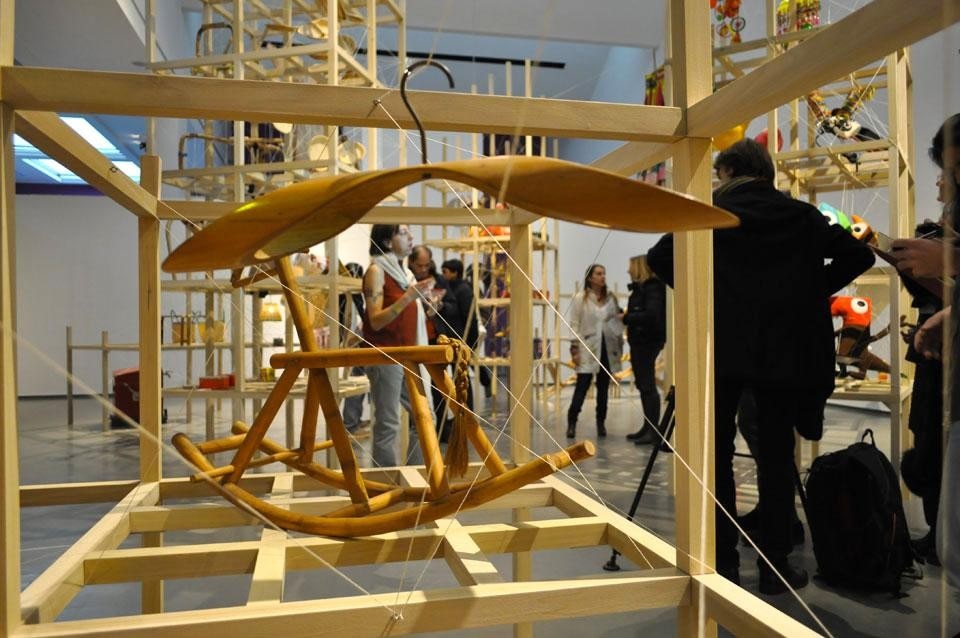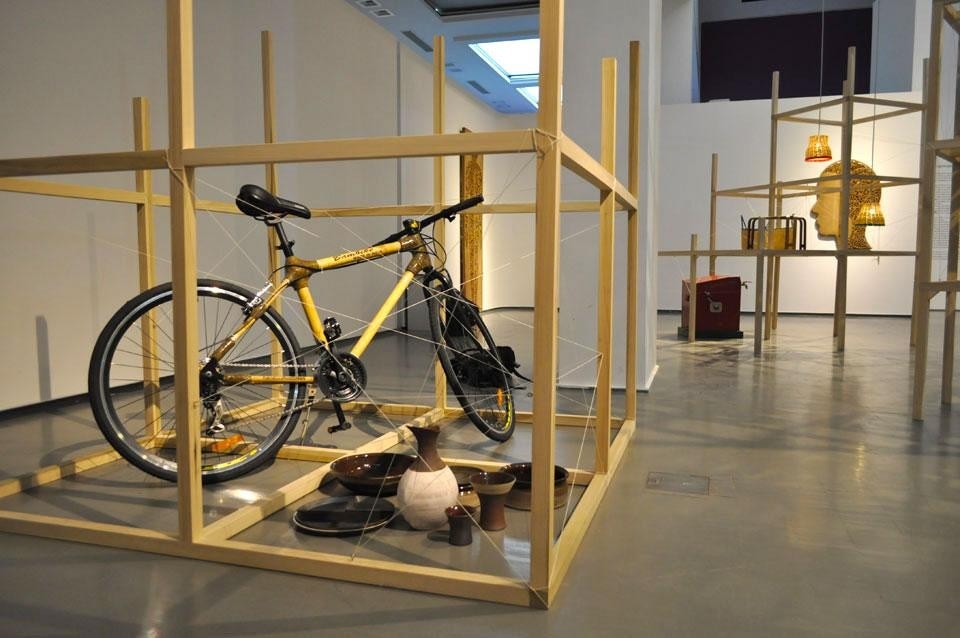The future of Indian design seems to lie primarily in small self-productions centred on what is being called barefoot design, the idea of rediscovering the work of village craftspeople, engineering solutions based on concrete needs and motivating small local economies. This is what happened with Reyma Jose's pedal-driven washing machine, designed in response to frequent power blackouts, Vijay Sharma's bamboo bicycle and Vikram Dinubhai Panchal's bamboo head-load carrier. This would seem the right path for a country that can rely on its own resources thanks to the fine quality of its craft production and a virtually unlimited workforce.
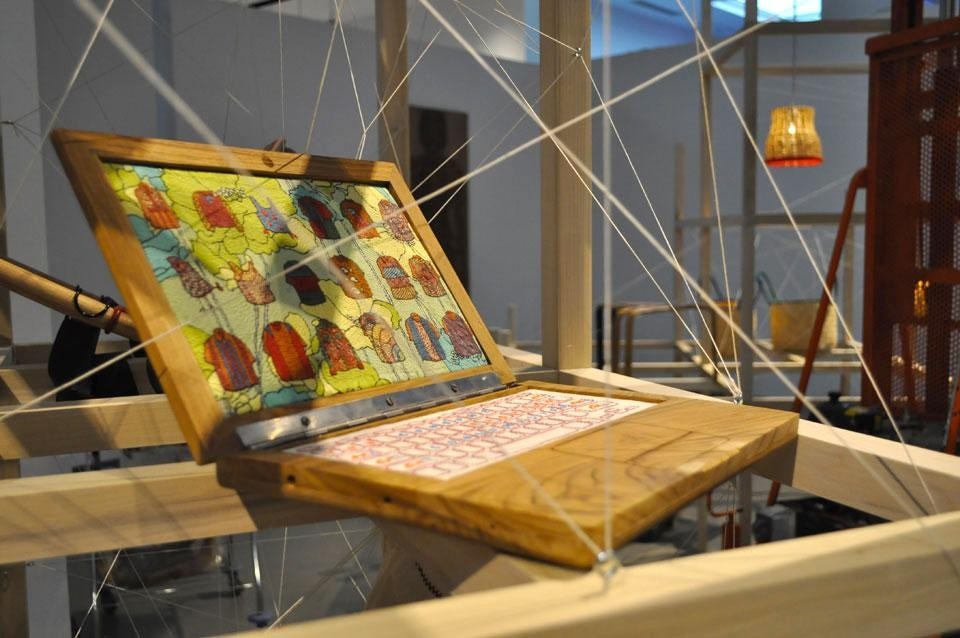
Simona Romano: Most of the products here are small self-productions launched by the designers themselves. Some examples, such as MP Ranjan's bamboo cube stool, which combines machine processing with fine craft detailing, also embody the concept of creating work and spawning small economies. Even the universities are offering courses in barefoot design that allow students to spend time in villages. The National Innovation Foundation is a permanent observatory at grassroots level that identifies the most interesting autochthonous inventions, such as the palm-tree climber for gathering coconuts. It is an extremely eclectic array of objects but they all share the link between contemporary life and tradition, which features the craft aspect but is also symbolic — from the Mahabharata, printed (with some irony) on a roll of Cheerharan toilet paper, to characters from Indian mythology on Cut Ok Paste children's paper toys and Bollywood film imagery applied by Manish Arora to his clothes.
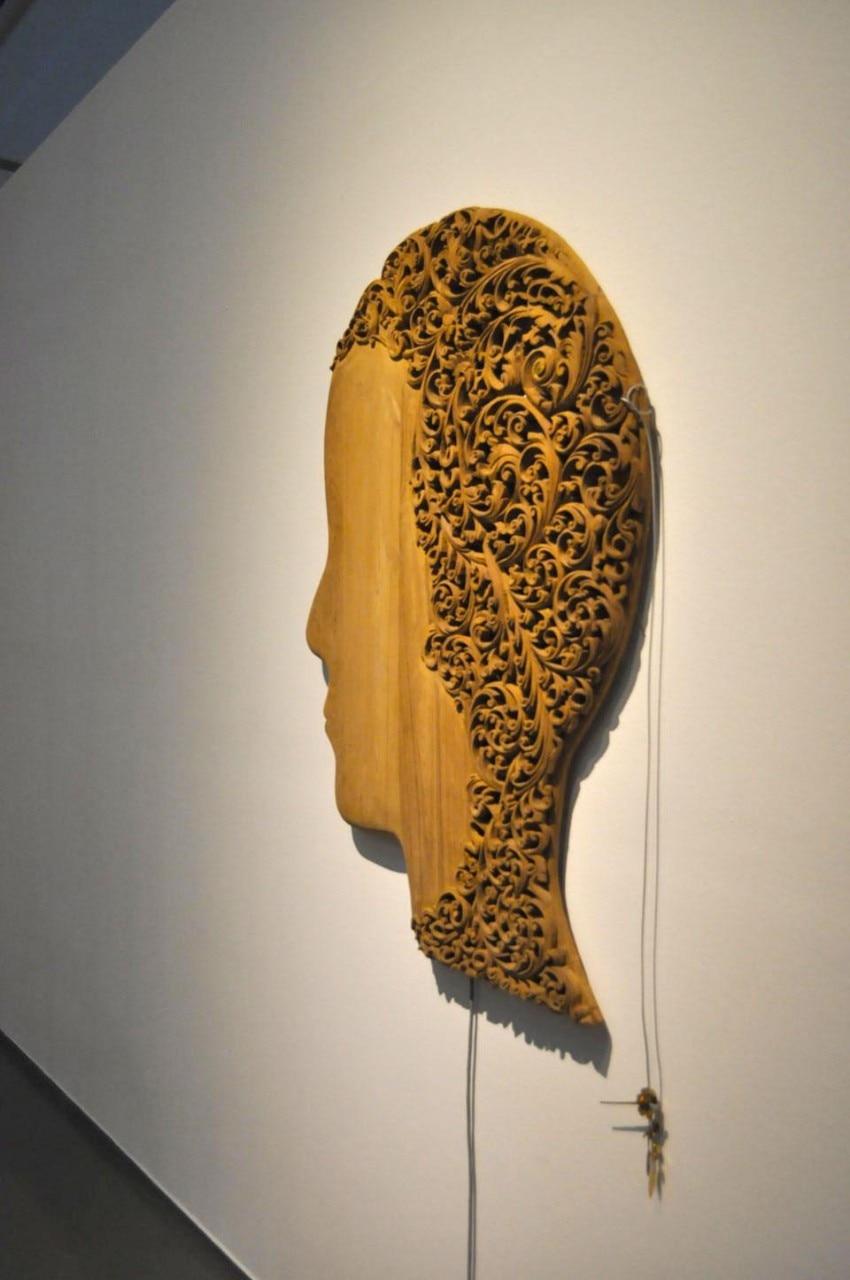
I think so. India does not need a European-like production system because it has such a huge supply of manpower and a great quality craft production. I believe that this organisational form of small productions and a return to craft traditions is its right path — and perhaps ours, too, in the sense that India offers us not only its vision but also the keys to current issues. This strong link between tradition and innovation — the underlying theme of the whole exhibition — might just be a source of inspiration to us too, although applied differently.
We have reached a point where culture is truly fragmented and it is extremely hard to find an identity and compactness in all the different global flows
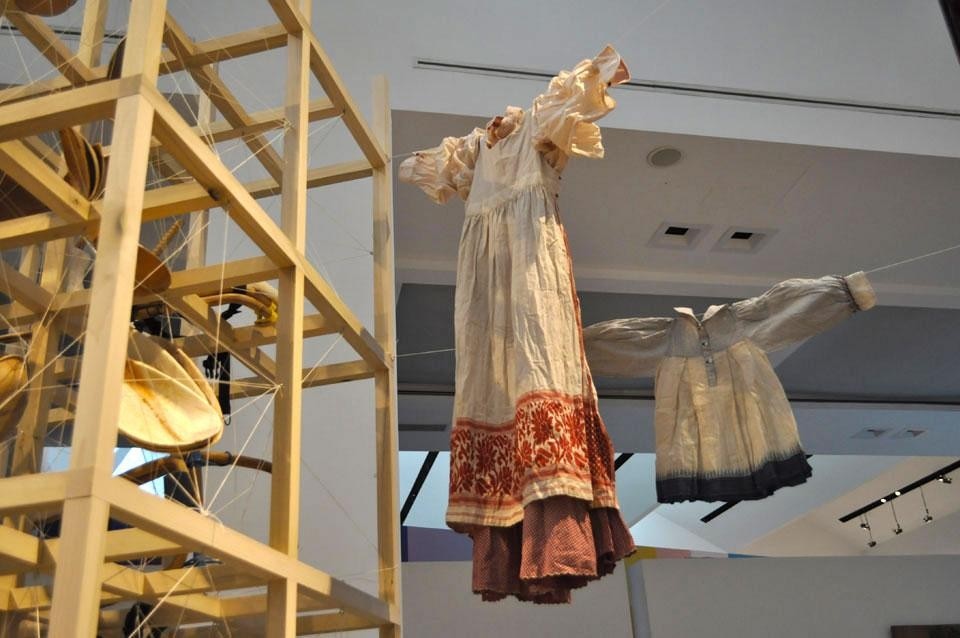
I do not think there is any point talking about Western or Asian Indian culture today. We have reached a point where culture is truly fragmented and it is extremely hard to find an identity and compactness in all the different global flows. Culture is constantly being renewed and changing but traditions can be a good design work tool. It is increasingly difficult to identify with a specific culture. It is a too unstable parameter for designers. What designers can do is focus concretely on traditions, hone in on things of the past, update them and offer them today. Indeed, objects that are strongly bound to tradition are also, to some degree, transactional; they are good medicine and a good accompaniment to traditional techniques or contain symbolic messages. There are some Western influences but this goes both ways. Even the Modern Movement was inspired by Japan. We really can't say what belongs to whom, but there are certainly no stateless objects, precisely because they resurrect different traditions and promote local cultures.
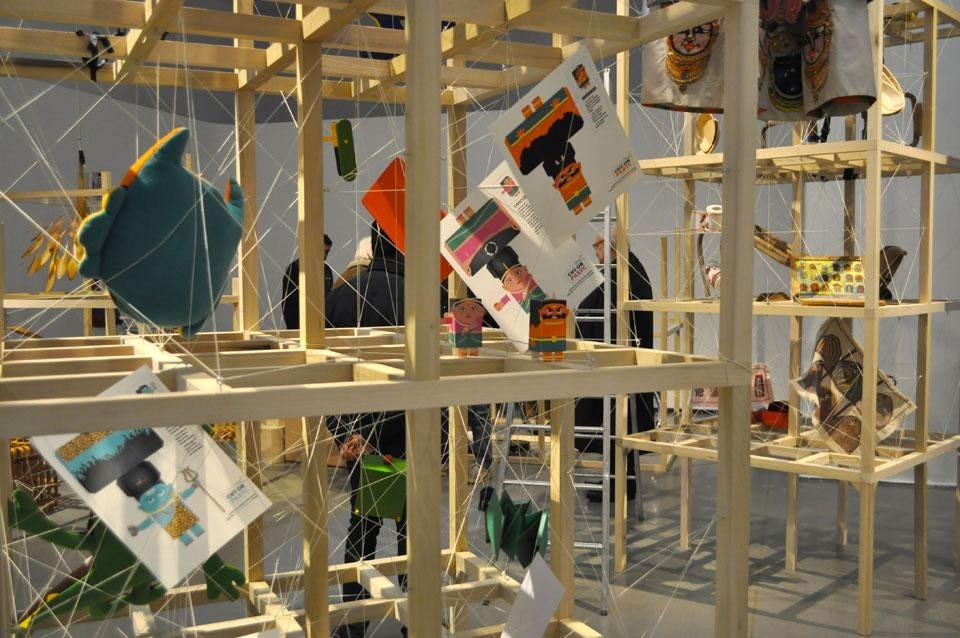
Technology is a chapter in itself. Technology travels parallel to the design project. India provides services: call centres, semi-finished goods and software. It excels in soft technology. There are two extremely interesting sculptures by Ranjit Makkuni, a designer who worked for Xerox PARC creating multimedia interfaces and learning systems for nearly 20 years. His workshop in India mixes tradition and technology. The wooden sculpture Re-visualizing a Green self, for instance, contains sophisticated tactile and sound devices. In his exhibitions, Makkuni proposes rituals and myths using interactive installations that bring people closer to technology in a friendly way. India has an extremely strong modernity that dovetails or is mixed with something atavistic to create an amazing melting pot. Indians are probably less aware of this.
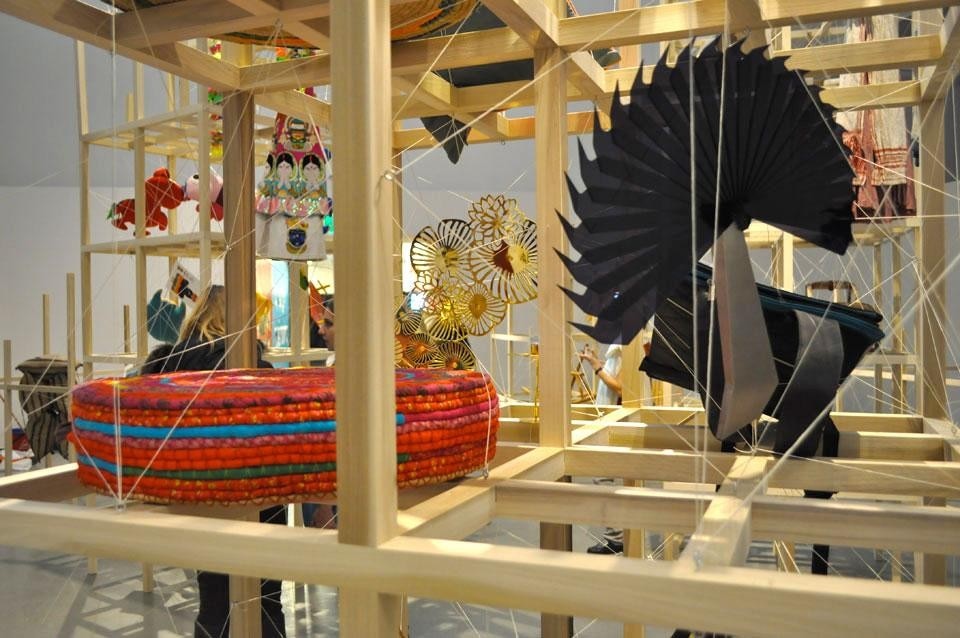
Kavita Singh Kale was inspired by the Fragile sculpture and the concept of a city in movement. The threads give the sense of an unstable balance. It is a highly refined project. Avnish explains that the concept of fragility is frequently linked to that of sustainability. We should not create something that is hard to destroy. Simple objects automatically wear out and disappear. She sees this as one of the fields that designers ought to explore — sustainable materials that wear out and disappear in the space of ten years.
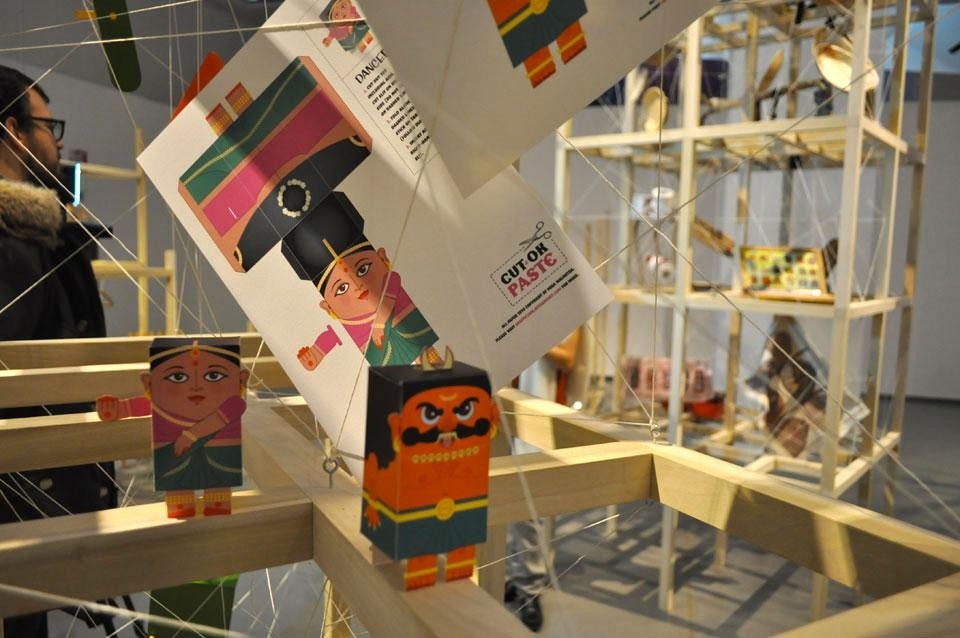
New India Designscape
Triennale Design Museum
Viale Alemagna 6, Milan
